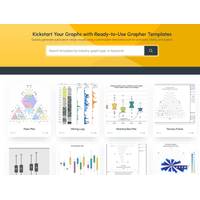
Golden Software Makes Upgrades Grapher Scientific Package with Enhanced Templates
users at every level.Grapher enables users to make better decisions by visualizing and communicating complex data sets in ways that simply can’t be accomplished with spreadsheets. Enhancements in the latest release of Grapher gives users faster and deeper insights into diverse data sets, including chemical, physical, geologic, and geospatial data, through 80 different 2D and 3D plotting types. The package is used extensively by scientists and engineers in environmental services and consulting, climate research, exploration, and academic pursuits.The newest release of Grapher, which is downloadable
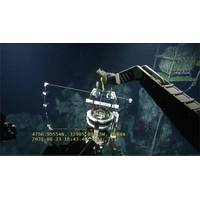
Battery Power Management and Control
thermocouples, photovoltaic, and piezoelectric. Passive transducers produce a change in resistance (potentiometer, strain gauge, thermistors, reed switch), capacitance (gauges), or inductance (differential transformer) as the response to a change in a parameter.A sensor detects a specific physical, chemical or biological quantity and converts the value it receives into an electrical signal. Sensors require an amplifier as they are limited to signal level power, often less than 1W. They cannot pass a great deal of power themselves. For power management, use a sensor to control an amplifier circuit:
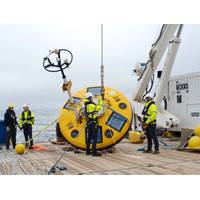
Scientists Collect Biodiversity Data in Argentina’s Submarine Canyons
seafloor features; some canyons had steep walls, while others had terraces. Scientists know the canyons concentrate phytoplankton, the base of the marine food web, along the shelfbreak, particularly near the canyon heads and surface waters, but no one had collected all the necessary physical and chemical oceanographic data documenting the conditions that facilitate the large blooms in these areas.Ph.D. student Melina Scian from the Universidad de Buenos Aires, Assistant Researcher Lucía Carolina Kahl from the Servicio de Hidrografía Naval, and Chief Scientist Silvia Romero from Servicio
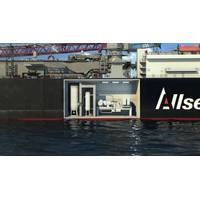
Study: Allseas SMR Tech Seen as Key Maritime, Industry Decarbonization Tool
sites. The reactor is being developed with NRG PALLAS, TU Delft and other partners, with the first units targeted for operation by 2030.The report said the compact and scalable design makes the reactor suitable for offshore operations, commercial vessels, port areas and industrial clusters such as chemical plants, steel facilities, refineries and data centers. It can also supply autonomous power for defense infrastructure and high-demand growth sectors including semiconductors, AI, quantum technology and supercomputing.Roland Berger estimates potential for installing up to 110 SMRs on land in the
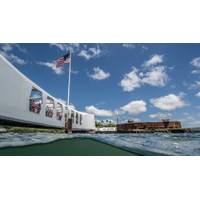
Oil Leaking from USS Arizona Could Provide Guidance for Thousands of WWII Shipwrecks
high concentrations of polycyclic aromatic hydrocarbons (PAHs), compounds known for their persistence and potential toxicity.WHOI Marine Chemist Chris Reddy collects oil samples from the USS Arizona Memorial in 2018. (Photo by Brett Seymour, NPS Submerged Resources Center)Researchers also found that the chemical composition of the oil varies depending on the leak location, reflecting differing degrees of natural “weathering” processes, including microbial biodegradation and dissolution. While lighter compounds are gradually breaking down, key petroleum biomarkers remain intact, allowing scientists
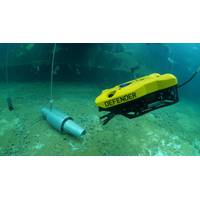
Coast Guard to Invest in Robotics and Autonomous Systems
, subsurface infrastructure surveys, disaster response and search and rescue missions. Their use will reduce reliance on Coast Guard divers, improving efficiency and safety.Coast Guard Strike Teams, which respond to hazardous materials spills, major marine casualties, groundings, natural disasters, chemical, biological, radiological or nuclear (CBRN) incidents and national special security events, will use the new UGVs to access and sample air in confined spaces aboard commercial vessels.The SR-UAS will support operations including infrastructure inspections, environmental observation, pollution response
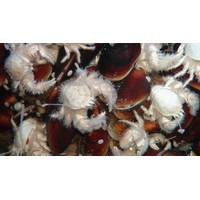
Novel Hydrothermal System Links Two Seabed Phenomena
Tok Pisin language, this means ‘mussel’.The unusual gas composition at the Karambusel field influences both the communities of life and the geological features. The methane emitted is highly concentrated, exceeding 80%, while hot fluids rise from the magma simultaneously, creating unique chemical conditions in the subsurface. Metals such as gold and silver, together with elements such as arsenic, antimony, and mercury, are deposited in the rock. Thus, the area bears the marks of an earlier, high-temperature phase involving precious metals, alongside present-day, cooler activity.Despite its

Eight Scientists Named 2025 Schmidt Polymaths to Pursue Research in New Disciplines
to demonstrate past ability and future potential to pursue early-stage, novel research that would otherwise be challenging to fund—even with the current declines in U.S. science funding.The 2025 Schmidt Polymaths are:Angela Wu, Associate Professor, Division of Life Science and the Department of Chemical and Biological Engineering, The Hong Kong University of Science and Technology. Dr. Wu will explore engineering approaches to create a fully human, functional in-vitro brain organoid that could one day be used for therapeutic transplantation.Arvind Murugan, Associate Professor of Physics, University
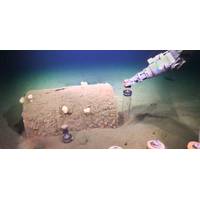
Barrels of Caustic Waste Found Off California
New research from UC San Diego's Scripps Institution of Oceanography reveals that barrels of caustic waste, thought to be related to the pesticide DDT, have created an extreme environment around them.Though the study’s findings can’t identify which specific chemicals were present in the barrels, DDT manufacturing did produce alkaline as well as acidic waste.“One of the main waste streams from DDT production was acid, and they didn’t put that into barrels,” said Johanna Gutleben, a Scripps postdoctoral scholar and the study’s first author. “It makes you
 December 2025
December 2025





